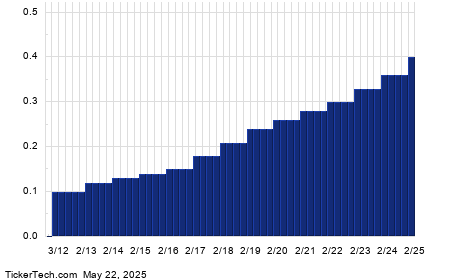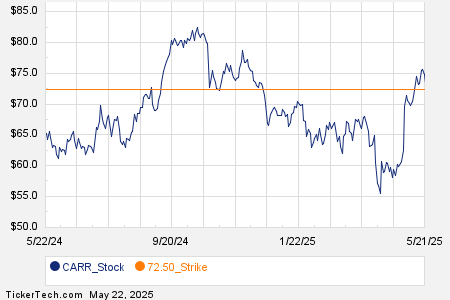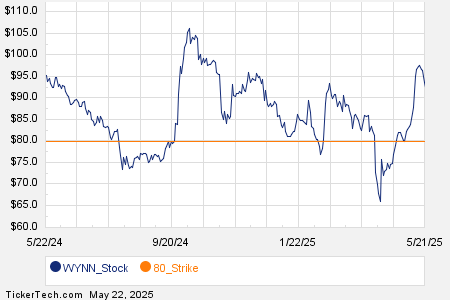The market is full of prominent stocks, but certain S&P 500 stocks rarely disappoint. I’m talking about the mega-cap giants of industry. They produce consistent profits and drive continued growth leading to capital appreciation over the long-term.
The three companies on this list certainly have the potential to rocket higher over a long-term time frame. They’re three stocks with historical charts that prove this reality. But for investors looking for quick meme stock-like gains, this isn’t the list for you. Plenty of talking heads are out there to reference for trading ideas over the next few months, weeks or even trading days.
Without further ado, let’s dive into three S&P 500 stocks that are worth buying for the long-term in May.
Berkshire Hathaway (BRK-A, BRK-B)

Source: shutterstock.com/QubixStudio
trading in two share classes, Berkshire Hathaway (NYSE:BRK-A, NYSE:BRK-B) is among the biggest conglomerates in the world.
The Warren Buffett-led entity owns a wide range of firms, from some of the biggest technology companies, to large utilities and insurance entities. Although the stock dipped, it’s still a great buy for investors. That’s especially true, considering that the company has a whopping $29 billion cash reserve and $32 billion revenue in insurance premiums. The current trend offers a rare buying opportunity, especially with anticipated hurricane season gains.
Berkshire Hathaway’s first-quarter 13F, filed on May 15, revealed their investment moves. The $332 billion portfolio, unchanged with 41 companies, saw Berkshire as a net seller of $17 billion in stocks. Berkshire Hathaway has holdings in Bank of America, American Express, Chevron, Coca-Cola and Apple. Also, 76% of its portfolio has all of these companies holdings.
On May 15, Berkshire announced that they have been investing in Chubb in the past nine months. With a total of $7 billion investment to date, Warren Buffet has acquired about 26 million shares. Following the announcement, Chubb shares rose 7% after trading hours.
Eli Lilly (LLY)

Source: Jonathan Weiss / Shutterstock.com
Eli Lilly’s (NYSE:LLY) Q1 revenue surged 26% to over $8.7 billion, driven by Mounjaro and Zepbound. Mounjaro saw a staggering 568% increase to $1.8 billion, while Zepbound’s sales reached $517 million. Both are tirzepatide injections, with Mounjaro for type 2 diabetes and Zepbound for obesity. Zepbound captured 57% of new anti-obesity prescriptions in the U.S., with a 40% market share, while Mounjaro holds 24% of the injectable-incretins segment for anti-diabetes drugs.
Eli Lilly’s Phase III trials of insulin efsitora in type 2 diabetes patients showed non-inferior A1C reduction compared to basal insulins. QWINT-2 focused on insulin-naïve patients, QWINT-4 on those using multiple daily injections. QWINT-2 compared efsitora to insulin degludec over 52 weeks.
LLY shares have surged 309% in three years, mainly due to two breakthrough medicines. Expectations for future growth are astounding.
Amazon (AMZN)\

Source: Tada Images / Shutterstock.com
Financials remained strong and stable for e-commerce giant Amazon (NASDAQ:AMZN) in its most recent quarter. Net sales came in at $143 billion, with Amazon Web Services (AWS) contributing over $15 billion in operating net income. Additionally, net income soared to over $10 billion. Despite recovering from 2022 losses, Amazon restrained cost growth to 4%, boosting profits.
Artificial intelligence (AI), not just e-commerce, drives Amazon’s stock growth. While online retail is low-margin, ancillary services like third-party seller services and AWS boost profitability. Despite AWS accounting for 17% of sales, it’s the main income source that supports AI applications. Amazon’s AI also helps in productivity, content creation, process optimization and customer relations.
Currently operating as one of the world’s most valuable companies, Amazon is due for a bright future. The market sees a 200% upside potential for its stock value over the medium-term. Moreover, with its strong presence in robotics and AI, Amazon could also be a worthy opponent in technological advancements.
On the date of publication, Chris MacDonald did not have (either directly or indirectly) any positions in the securities mentioned in this article. The opinions expressed in this article are those of the writer, subject to the InvestorPlace.com Publishing Guidelines.




